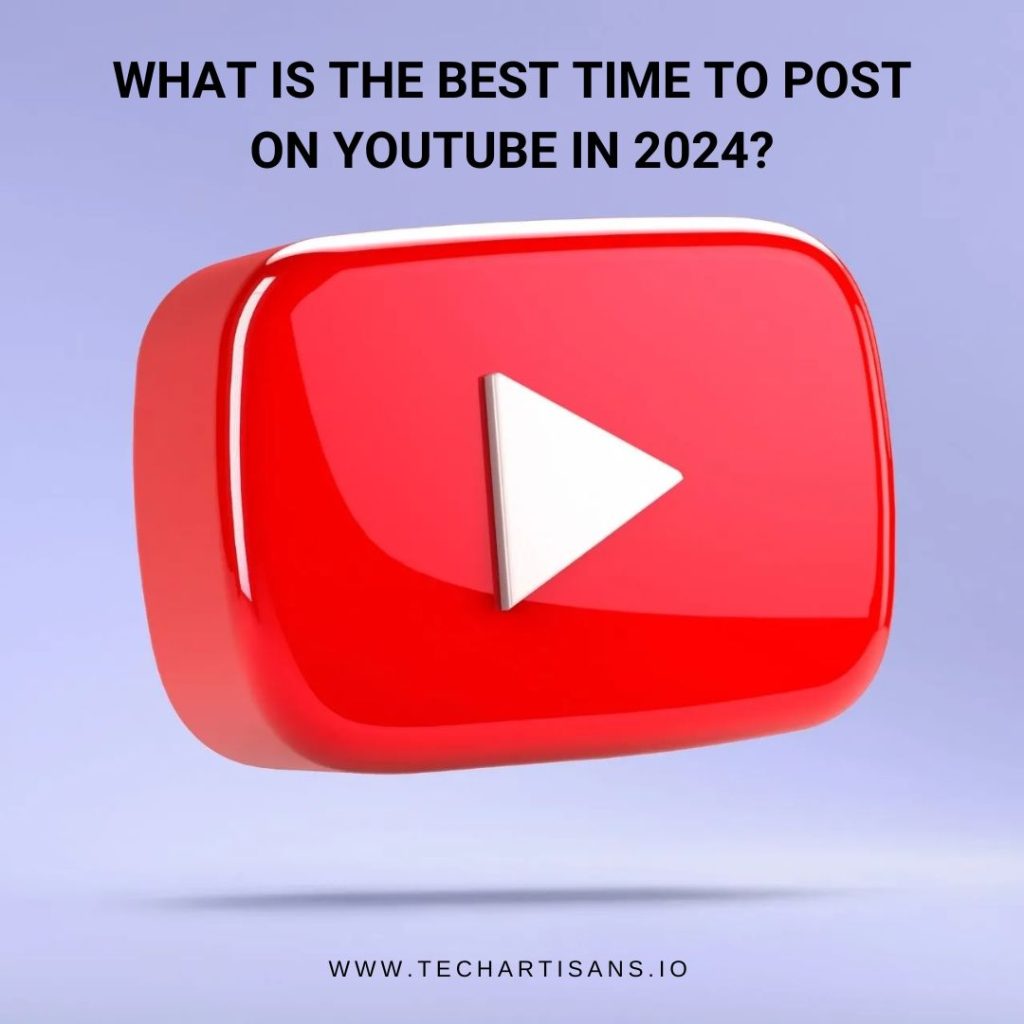In today’s digital world, social media is a game-changer for businesses. It’s how they connect with customers and promote their brand. Platforms like Facebook, LinkedIn, and Instagram offer amazing opportunities. Small to medium businesses can find incredible growth and success by mastering social media. Our guide is your light in this vast social media landscape, helping you unlock its full potential. Let’s explore the social media 101 guide!
Social Media 101: Your Complete Guide to Social Media Basics
Let’s dive into “Social Media Marketing, a complete guide to mastering the basics of effective social media usage.
Understanding Social Media Marketing
Social media marketing is essential to modern business strategy, offering a rich tapestry of interaction, engagement, and promotion opportunities. It uses social media platforms to connect with your audience, build brand awareness, and drive website traffic.
Definition and Significance
Social media refers to various online platforms enabling interactive communication and content sharing among users. These platforms include popular names like Facebook, Instagram, Twitter, and LinkedIn, each offering unique ways to connect and engage with a vast audience.
The significance of social media in today’s business world cannot be overstated. It’s a powerful tool that allows businesses to reach beyond geographical boundaries, directly interact with customers, and build a strong online presence. A well-executed social media strategy can lead to increased brand awareness, higher conversion rates, improved customer satisfaction, and business growth. Therefore, understanding the basics – ‘Social Media 101’ is crucial for any business aiming to leverage the power of digital interactions.
Shift From Traditional Marketing to Social Media Marketing
Old-school marketing used to be business kings, like TV, print, and radio ads. But they were a bit one-sided, lacking real dialogue with consumers.
Then came social media, changing the game. Businesses don’t just talk at people; they have real back-and-forths. Social media lets all companies, especially smaller ones, directly engage with their audience, hear their concerns, and learn from their feedback.
Key Terms in Social Media Marketing
Let’s dive into the basics and grasp the ‘Social Media 101’ vocabulary.
Content
Content is the heart and soul of your social media posts. It is the vital information, ideas, or experiences you share to engage your audience. High-quality content, whether a compelling image, insightful article, or engaging video, attracts attention, sparks conversations, and encourages shares, thus driving your brand’s online visibility and engagement.
Context
Context refers to how your content resonates with the platform it’s shared on and the audience viewing it. Ensuring that your content suits the platform’s norms and caters to your target audience’s interests, needs, and preferences is crucial. A contextual approach enhances engagement and fosters connections.
Hashtags
Hashtags are essential tools in social media marketing, serving as keywords to categorize and simplify content discovery. They function as clickable links on most platforms, allowing users to easily find, follow, and join conversations on specific topics or events. Effectively used hashtags can significantly increase your content’s visibility and reach.
Shares
Shares are often referred to as the currency of social media. This is because when a user shares your content, it amplifies its reach, extending visibility beyond your immediate followers to their networks. Shares foster organic exposure and engagement, thus enhancing your brand’s presence and influence on the platform.
Engagement
Engagement refers to the interaction between users and your content on social media platforms. This includes likes, shares, comments, and retweets, all of which signify your audience’s level of interest or involvement with your brand. High engagement indicates compelling content and strong audience connectivity.
Core Pillars of Social Media Marketing
Understanding these fundamentals is vital to effectively navigate the social media seascape and achieve your marketing objectives.
Strategy
A well-defined strategy is the compass for your social media presence, guiding every post, reply, like, and comment toward your overall business objectives. This involves setting clear and attainable goals, identifying your target audience, and understanding the needs and wants of this audience.
By choosing the right platform and tailoring your content and voice to resonate with your audience, you can craft a social media strategy that drives engagement and fosters customer relationships.
Planning and Publishing
To rock social media, you need a game plan and stick-to-it-ness. Your content should match your brand’s style and be posted at the right times for maximum engagement.
Being consistent is just as crucial. Regular posts keep your brand in people’s heads and show you’re active. Sticking to your brand’s tone and message in all your posts boosts recognition and loyalty. Bottom line: Consistency is building a strong social media identity and a dedicated following.
Listening and Engagement
In ‘Social Media 101’, listening and engaging are the building blocks of strong customer connections. Keep an ear out for comments, mentions, and messages to understand your audience’s wants and thoughts.
You create a sense of community when you interact by acknowledging feedback, answering questions, or even giving a thumbs-up to comments. It demonstrates that your business cares about what customers have to say and is open to making things better.
Analytics
In ‘Social Media 101’, analytics are your performance report card. You watch numbers like engagement rate, follower growth, clicks, and reach to see how well your social media plan is doing. This data tells you what’s a hit and a miss, helping you fine-tune your approach. Knowing these numbers lets you tweak your content, posting times, or engagement methods to get better results and strengthen your social media game.
Read more about Utilizing Google Analytics for Monitoring Social Media Impact
Advertisement
Advertising on social media encompasses a spectrum ranging from organic to paid and earned content. Organic content is simply your regular posts on your social media channels. These are not promoted with advertising dollars and reach your followers naturally. They are essential for maintaining an active and engaging presence. Paid content, on the other hand, involves promoting your posts with advertising dollars to reach a wider or more targeted audience.
Types of Social Media Marketing
Let’s dive into the different types of social media marketing.
Community Management
Community management nurtures connections and sparks interaction on social media by responding to comments, engaging in discussions, and making members feel valued. It goes beyond moderation to create a lively, loyal community that offers quick customer support and portrays your brand as accessible and caring.
Content Creation
In Social Media 101, creating valuable and unique content is the heart of your strategy. It should resonate with your audience, encouraging them to engage. You can drive traffic to your website by providing answers, solutions, or entertainment in your content, making your social media a strong customer acquisition tool.
Growth
Growth is vital in ‘Social Media strategies.’ It involves implementing strategies to increase followers and enhance brand visibility. This may include consistent posting, engaging content, collaborations, hashtag use, and contests. Analyzing engagement data also enables you to refine your strategies for optimal growth.
Social Media Marketing Trends
In the ever-evolving social media landscape, keeping up with the latest trends is integral to ‘Social Media.’ These trends provide insight into what’s currently catching your audience’s attention and help anticipate the future direction of social media marketing. Let’s delve into the most impactful trends shaping the world of social media today.
Decline in Organic Reach
The decline of organic reach is a notable trend in the ‘Social Media 101’ landscape. It refers to the decreasing visibility of unpaid content in social media feeds due to algorithm changes favoring paid advertisements and personal content. As organic reach dwindles, businesses must adapt by investing more in paid strategies or focusing on highly engaging content to maintain visibility.
Shift to the “Pay to Play” Model
The shift to a “Pay to Play” model is a significant trend essential to understanding ‘Social Media.’ This model implies that brands must budget for social media advertising to ensure their content reaches a broad audience. Due to evolving social media algorithms, more than organic reach is required, making paid promotion necessary for visibility. Consequently, brands must balance their strategies between organic engagement and paid advertisements for a comprehensive social media presence.
Merging of Channels and Tools
The merging of channels and tools is a growing trend in ‘Social Media 101. It involves the integration of various social media platforms and tools to streamline marketing efforts. For instance, cross-posting content across multiple channels or using management tools for scheduling posts and tracking analytics. This merger enhances efficiency and consistency in maintaining a robust social media presence. Moreover, it allows a unified user experience, increasing engagement chances.
Diving Deep into Platforms
Each platform has unique strengths, audiences, and best practices that can be leveraged to achieve your business goals. Let’s dive in and explore these platforms in detail.
Facebook, a pivotal platform in any ‘Social Media guide, offers a variety of features that enhance brand visibility and customer engagement.
Facebook Ads: Facebook Ads are great for businesses because they let you aim your ads at specific people, increasing your chances of reaching potential customers. You can also set budgets and see how your ads are doing, giving you control and insights.
Facebook Live: This live-streaming video feature allows businesses to engage with their audience in real-time. It’s ideal for hosting Q&A sessions, product launches, or providing behind-the-scenes glimpses to your followers. The real-time interaction it facilitates is valuable for building a sense of community.
Audience Engagement: Facebook boasts a variety of tools for audience engagement, like comments, likes, shares, and newly introduced reactions. Businesses can also utilize polls, contests, and Facebook Groups to foster interaction. Regular and meaningful engagement with your audience fosters strong relationships, ultimately enhancing brand loyalty.
Instagram, another vital platform in ‘Social Media 101’, is built around visuals and offers unique engagement tools.
Visual Content: Instagram’s focus on visuals allows businesses to showcase their products, services, or brand personality visually appealingly. High-quality photos, graphics, and short videos attract and retain followers’ attention.
Instagram Stories: Stories are a stellar feature of Instagram that allows businesses to post ephemeral content for 24 hours. They’re perfect for sharing behind-the-scenes content, daily updates, or time-bound promotions. Moreover, they appear at the top of followers’ feeds, increasing visibility.
Engagement Tools: Instagram offers several tools for audience engagement, such as likes, comments, shares, direct messaging, and more. Instagram’s algorithm favors posts that receive immediate engagement, meaning posts that generate quick likes or comments tend to be seen by more followers. Also, features like polls, question stickers, and interactive filters in stories foster additional engagement.
Best Practices for Social Media Marketing
Let’s delve into the principles that are the cornerstone of any successful ‘Social Media 101’ strategy, guiding you on maximizing results while ensuring meaningful engagement with your audience.
Consistency in Posting
Consistency in posting is a critical aspect of ‘Social Media. Maintaining a regular posting schedule to keep your audience engaged and informed. Consistent posting helps to hold your audience’s interest and boosts your visibility and reach on the platform.
Authenticity in Engagement
Authenticity in engagement is essential in ‘Social Media.’ It involves genuine interaction with your audience, showing your business’s human side, and building trust. Authentic engagement includes responding to comments, sharing customer testimonials, and expressing gratitude. It’s about fostering meaningful relationships with your audience and boosting brand loyalty and customer retention.
Utilizing Analytics for Informed Decisions
Utilizing analytics is a key component of ‘Social Media 101’. It involves harnessing platform-specific data to guide your social media strategy. Analytics provide valuable insights into audience behavior, engagement patterns, and content performance.
Collaborating With Influencers
Working with influencers is a big part of ‘Social Media.’ They’ve got a solid reputation and loyal followers like your target audience. They can boost your brand by promoting your stuff in different ways, but picking ones that match your values is vital. Followers can tell if it’s a real partnership, and it affects how well it works.
Challenges in Social Media Marketing
Despite the numerous benefits, implementing a successful ‘Social Media 101’ marketing strategy has challenges.
Keeping up With Ever-changing Algorithms
Staying abreast of ever-evolving social media algorithms can be challenging in ‘Social Media.’ These algorithms determine which content gets visibility and how much. They frequently change in response to user behavior and platform updates. Therefore, understanding and adapting to these changes is critical to ensure your content reaches your target audience and maintains high engagement levels.
Managing Negative Feedback
Managing negative feedback is a crucial part of ‘Social Media 101’. Negative comments or reviews can sway public perception of your brand. However, appropriately addressing the criticism can turn the situation around. Being responsive, empathetic, and solution-focused is key.
Balancing Organic and Paid Strategies
Balancing organic and paid strategies is critical to ‘Social Media.’ Organic methods involve creating valuable content that naturally attracts followers, while paid plans rely on advertisements to reach a broader audience. The right balance between the two can maximize your online visibility and engagement, driving short-term gains and long-term loyalty.
Conclusion
Understanding the basics of social media is imperative for businesses in the digital age. Our comprehensive ‘Social Media 101’ guide provides the foundation for navigating the dynamic landscape of social media marketing. Consistent posting, authentic engagement, data-driven decisions, and strategic collaborations cannot be overstated.
Remember, mastering social media marketing is a marathon, not a sprint. Embrace the challenge, learn from your experiences, and continually strive to improve. Your business’s success in social media is a continual learning and adaptation journey.







